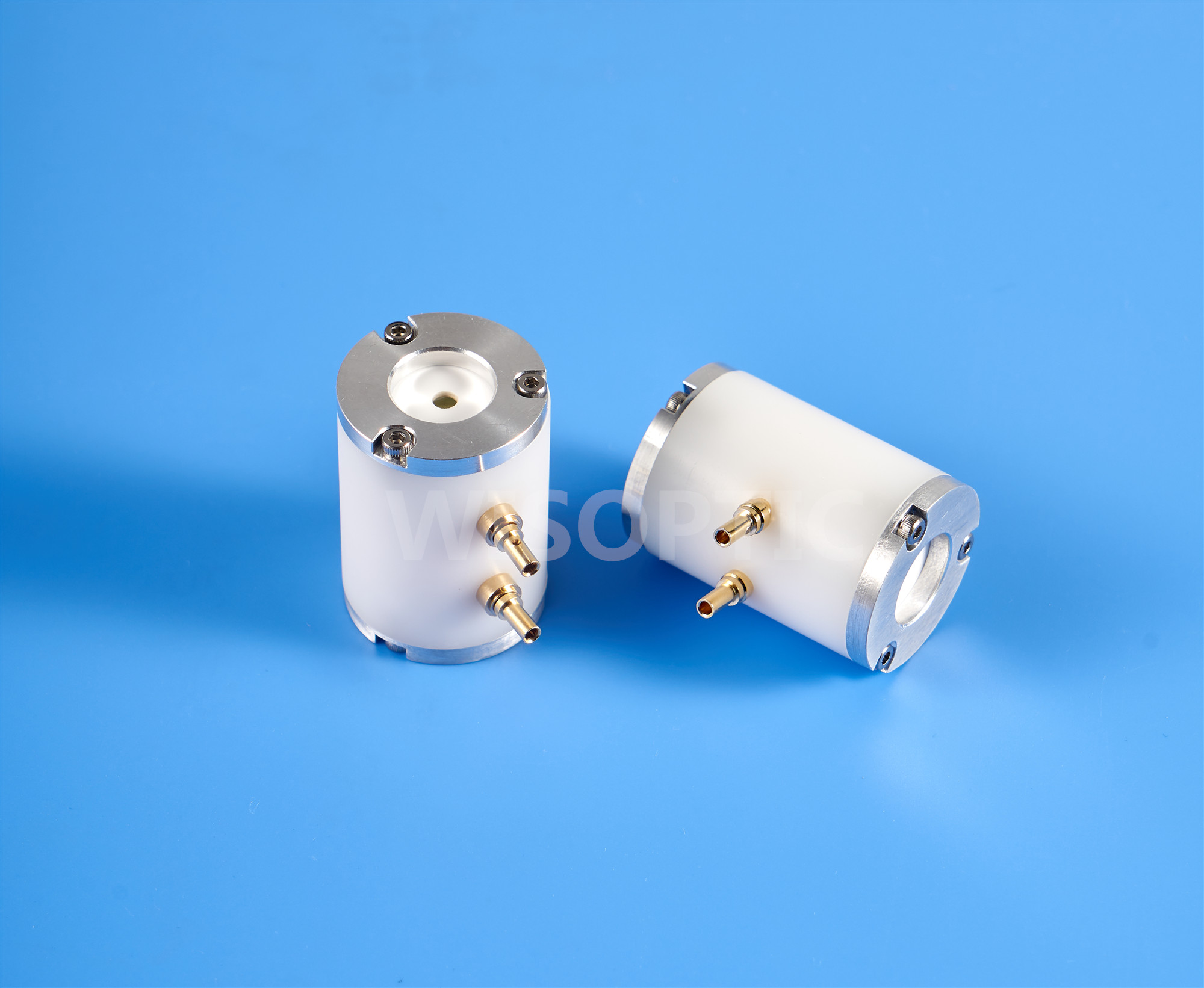The low temperature phase barium metaborate (β-BaB2O4, BBO for short) crystal belongs to the tripartite crystal system, 3m point group. In 1949, Levin et al. discovered low-temperature phase barium metaborate BaB2O4 compound. In 1968, Brixner et al. used BaCl2 as flux to get transparent needle-like single crystal. In 1969, Hubner used Li2O as flux to grow 0.5mm×0.5mm×0.5mm and measured the basic data of density, cell parameters and space group. After 1982, Fujian Institute of Matter Structure, Chinese Academy of Sciences used the molten-salt seed-crystal method to grow large single crystal in flux, and found that BBO crystal is an excellent ultraviolet frequency-doubling material. For electro-optic Q-switching application, BBO crystal has disadvantage of low electro-optic coefficient that leads to high half-wave voltage, but it has outstanding advantage of very high laser damage threshold.
The Fujian Institute of Matter Structure, Chinese Academy of Sciences has carried out a series of work on the growth of BBO crystals. In 1985, a single crystal with size of φ67mm×14mm was grown. The crystal size reached φ76mm×15mm in 1986 and φ120mm×23mm in 1988.
The growth of crystals above all adopts molten-salt seed-crystal method (also known as top-seed-crystal method, flux-lifting method, etc.). The crystal growth rate in the c-axis direction is slow, and it is difficult to get high-quality long crystal. Moreover, the electro-optic coefficient of BBO crystal is relatively small, and short crystal means higher working voltage is required. In 1995, Goodno et al. used BBO as electro-optic material for E-O Q-modulation of Nd:YLF laser. The size of this BBO crystal was 3mm×3mm×15mm(x, y, z), and transverse modulation was adopted. Although the length-height ratio of this BBO reaches 5:1, the quarter-wave voltage is still up to 4.6 kV, which is about 5 times of the E-O Q-modulation of LN crystal under the same conditions.
In order to reduce the operating voltage, BBO E-O Q-switch uses two or three crystals together, which increases insertion loss and cost. Nickel et al. reduced the half-wave voltage of BBO crystal by making light pass through the crystal for several times. As shown in the figure, the laser beam passes through the crystal for four times, and the phase delay caused by the high reflection mirror placed at 45° was compensated by the wave-plate placed in the optical path. By this way, the half-wave voltage of this BBO Q-switch could be as low as 3.6 kV.
Figure 1. BBO E-O Q-modulation with low half-wave voltage – WISOPTIC
In 2011 Perlov et al. used NaF as flux to grow BBO crystal with length of 50mm in c-axis direction, and obtained BBO E-O device with size of 5mm×5mm×40mm, and with optical uniformity better than 1×10−6 cm−1, which meets the requirements of E-O Q-switching applications. However, the growth cycle of this method is more than 2 months, and the cost is still high.
At present, the low effective E-O coefficient of BBO crystal and the difficulty of growing BBO with large size and high quality still restrict BBO’s E-O Q-switching application. However, due to the high laser damage threshold and ability to work at high repetition frequency, BBO crystal is still a kind of E-O Q-modulation material with important value and promising future.
Figure 2. BBO E-O Q-Switch with low half-wave voltage – Made by WISOPTIC Technology Co., Ltd.
Post time: Oct-12-2021

